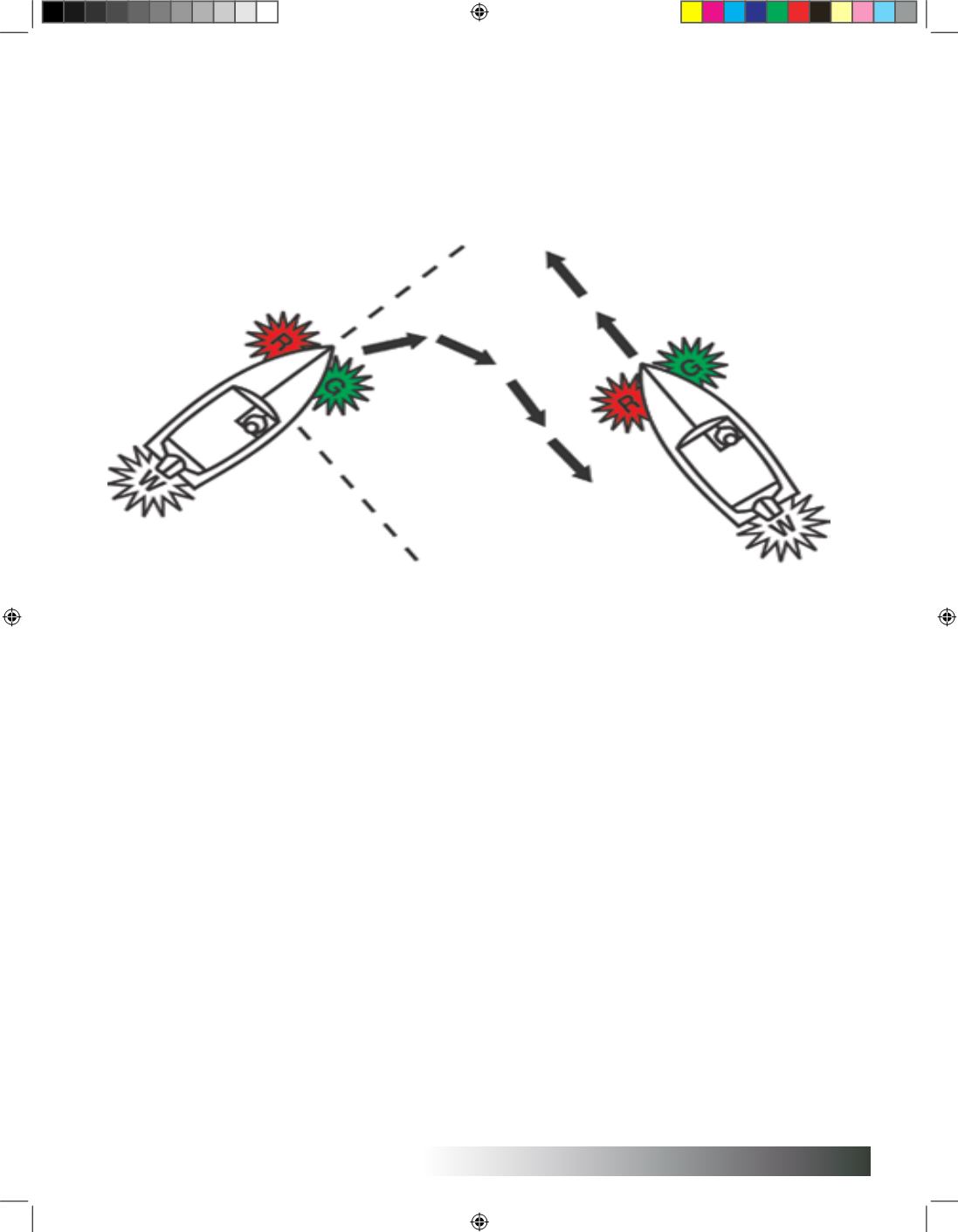
50 HOLIDAY 2013 boatingonthehudson.com
With a few exceptions, there is a
certain “pecking order” to determine
which vessel is the “stand on” and
which vessel if the “give way” when ves-
sels approach each other.
The Coast Guard Inland rules list the
following order with number 1 having
the highest priority and number 5 being
the lowest.
1. Vessel not under command, think
disabled.
2. Vessel restricted in its ability to
maneuver, think of a tug towing a barge.
3. Vessel engaged in fishing, think of
a trawler dragging nets.
4. Sailing vessel, while under sail.
5. Power driven vessel, any power
boat and a sailboat under motor power
You may be certain that you know the
rules, and have the right of way, but the
other operator may not know the rules,
so take early and substantial action as
soon as possible to make your inten-
tions clear and avoid a collision. As stat-
ed in an earlier article, as unbelievable
as it seems, the only operators required
to taking any kind of boating course are
those who operate personal water-
craft. The possibility of an operator of
any other type of vessel not knowing
who has the right of way is probably
greater than one who does.
What about going into or out of a nar-
row marina channel entrance? Coast
Guard rule 9(A)(i) states “If you are
traveling by a power driven or sailboat
along a narrow channel or fairway, you
must stay as safely as possible to the
starboard side and the outer limit of
the channel”. In our opinion the exit-
ing boat should prevail because under
number 2, it is “a vessel restricted in its
ability to maneuver”.
What about passing another vessel?
On September 28th our family took a
cruise up the Hudson out of Peekskill
on the Evening Star, which is the boat
used by Mary Pat Driscoll for her Trinity
Cruise Line, who is also a customer in
our agency.This is a sightseeing cruise
and we were traveling at a slow speed,
enjoying the scenery and narration,
with about 30 on board. Coming from
behind, traveling at a speed of about 50
mph was a boat of about 25 – 30 feet
in length about 40 feet from us, passing
and creating a wake which caused our
Captain Lou, have to change course
to avoid severe rocking. He sounded
the horn, but I believe the operator
didn’t even know he was doing anything
wrong. So, keeping a safe distance for
safety reasons as well as for courtesy
can be as important as the right of way
issue.
Be prudent and check with your agent
or insurance company to find out what
limit of liability insurance you have on
your policy to protect you in the event
of a law suit. Even though you may be
correct in your boat operation, this
does not prevent someone from suing
you and saying you were the one at
fault. Without adequate insurance, your
personal assets could be in jeopardy.
We can be reached for questions or a
quote for any of your insurance needs
at
or
by phone at 914-271-5188.
RIGHT OF WAY –
WHO GOES FIRST?
By Cathy Karas
HOLIDAY 2013.indd 57
11/7/13 7:50 AM


